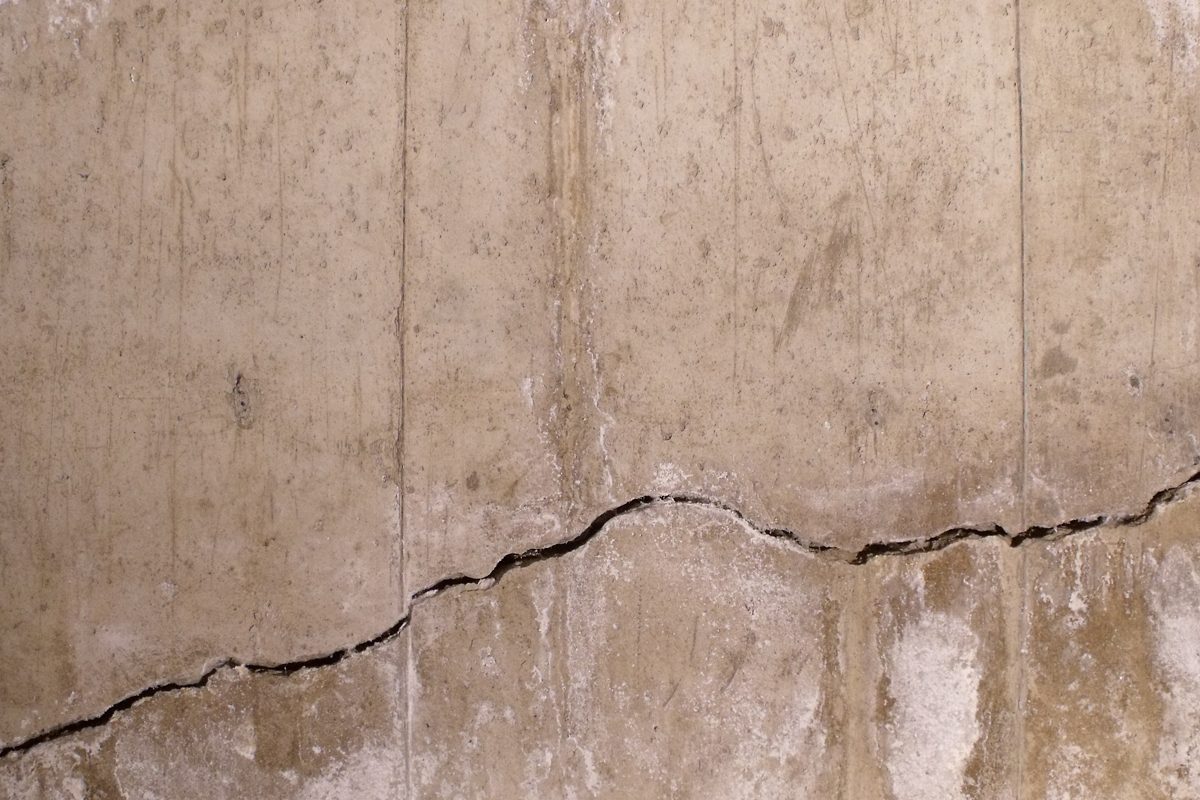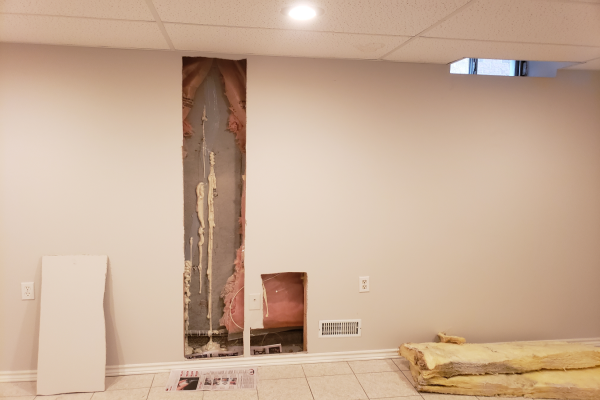In this post we take the mystery out of basement leaks encountered that relate specifically to poured concrete foundations, as well as the basement waterproofing industry standard repair solutions for each type of leak repair.
Basement leaks in poured concrete foundations are quite common and for the most part they are easily and inexpensively repaired. In general, basement leaks in poured concrete foundations are repaired from inside your home.
The most common sources of basement leaks in poured concrete foundations:
- Cracks;
- Honeycombing (concrete with exposed aggregate);
- Tie rod holes;
- Snap rods;
- Leaks from I-beam pockets;
- Pipe penetrations through the foundation wall (ie. Air conditioning lines, electrical conduits, gas lines, etc.);
- Around or below window frames and through basement windows; and
- Leaks originating between the floor slab and the foundation wall.
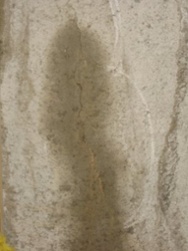
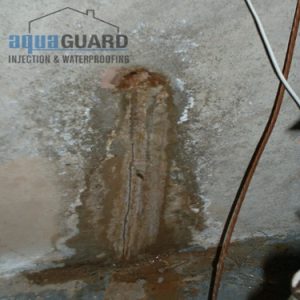
By far, the vast majority of basement leaks can be attributed to cracks in the foundation and leaking tie-rod holes. While not as common, basement leaks through honeycombing, pipe penetrations and I-beam pocket leaks are fairly typical. Fortunately, every one of these issues can be fixed either from the inside using injection or by the traditional method of exterior excavation and waterproofing involving the use of a waterproof membrane or coating.
The popularity of pressurized injection for repairing basement leaks
Today injection is, by far, the most popular repair method for basement leaks; likely due to the fact that it is the least expensive and the quickest basement leak repair method available on the market. Furthermore, pressurized injection of basement leaks is extremely effective; when properly performed, using the appropriate resins (this is not a given), injections enjoy a very high rate of success in putting an end to virtually all basement leaks.
In terms of injection methods, there are two types of injection available for poured concrete foundations: polyurethane and epoxy. Polyurethane injection utilizes an expansive resin that fills up large cavities and provides a flexible seal. Polyurethane (sometimes referred to as urethane) can be used in just about any injection application, from cracks and tie-rod holes to areas of honeycombing, I-beam pocket leaks and pipe penetration leaks.
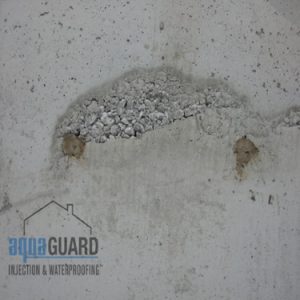
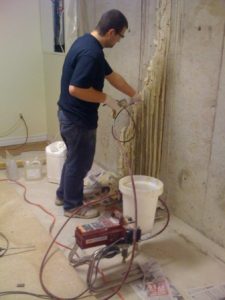
Epoxy on the other hand, while it is an excellent repair method, and we utilize it frequently for crack injections, has a limited scope of use. Epoxy is used exclusively to repair foundation cracks that are not actively leaking and when a structural repair is desired. Its use is limited as the surface of the crack must be dry at the time of injection and the crack cannot be obstructed by sediment or resins from previous basement leak repair attempts.
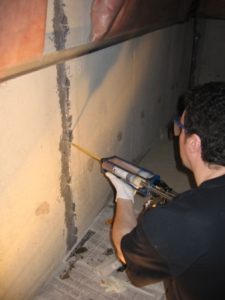
Want to know more?
Article on epoxy crack injection
Article on polyurethane injection
Comparison of epoxy vs polyurethane
Traditional basement waterproofing – Excavation
Excavation and waterproofing, the other viable option for stopping basement leaks is just as effective as injection in stopping basement leaks as long as the repair is executed correctly and the most appropriate materials are used (again, this is not a given). External waterproofing involves the following steps:
- Excavation of the problem area, either by hand or by machine;
- Exposing the entire crack or the problem area; which sometimes may be difficult to visually identify on the outside;
- Cleaning of the foundation wall;
- Applying either a waterproof coating or membrane to the surface; and
- Backfilling.
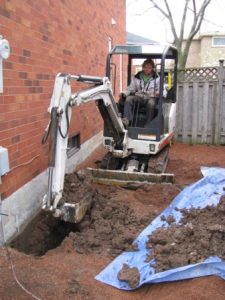
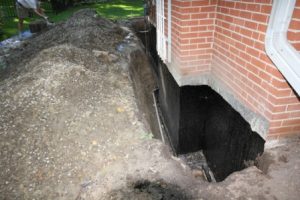
Both injection and exterior waterproofing methods are permanent solutions and both are very effective; however, injection is a fraction of the price of excavation, it is much less invasive and less time consuming.
Less frequent leaks encountered with poured concrete foundations
Basement leaks associated with windows and poor window well drainage
Basement leaks can also be caused by water leakage around window frames, and sometimes even right through the windows themselves! Often times, if water is coming from around the window frame, one of two solutions is required: the installation of a window well and drain, or the window frame needs to be caulked because water is penetrating the window frame during a direct rain. When water comes through a basement window it is generally because of a lack of window well drainage and / or a large quantity of water is able to accumulate in the window well. Injecting around the window frame is not an option since the pressure of the expansive polyurethane will often warp the window frame and make it impossible to open the basement window. Therefore, in cases of water ingress through basement windows, sealing the window frame with caulking and installing a window well and / or drain is the right approach.
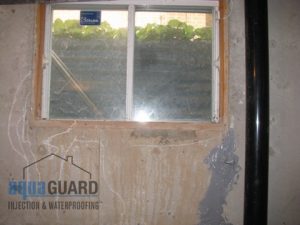
Basement leaks during heavy rains
Another source of basement leaks, usually during very heavy rains, is water entering the basement through the joint where the floor slab meets the foundation walls. This phenomenon is an indication of a high water table which is forcing water up through the basement floor slab where there is a gap. The only remedy for this particular problem is to install a sump pump beneath the basement floor, thus creating a drainage point, with a perforated liner so that water can be collected and evacuated to the outside.
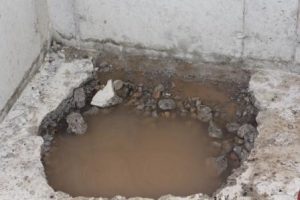
From what we have discussed there are a number of different sources of basement leaks in poured concrete foundations; fortunately, they are not too difficult or time consuming to fix.
Note: If you have a finished basement it is not possible to conclusively identify the cause of a basement leak without looking behind the drywall.

